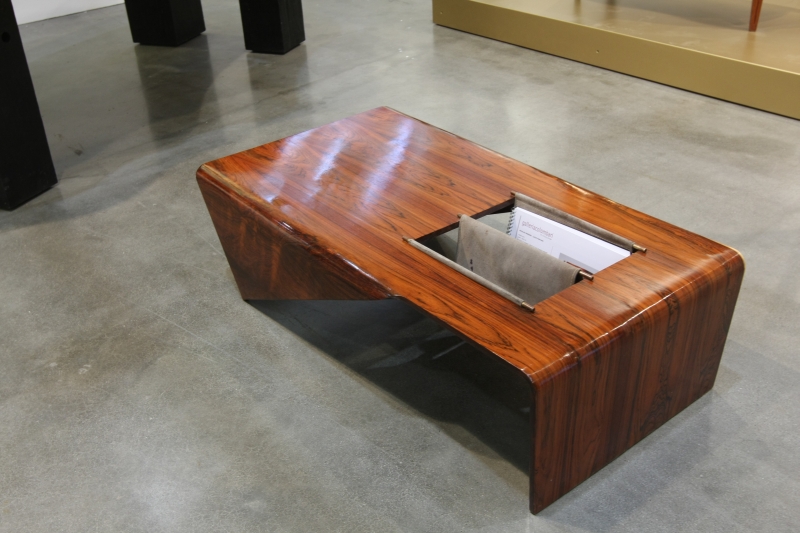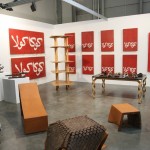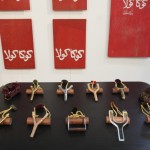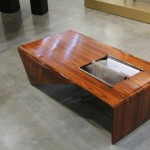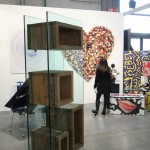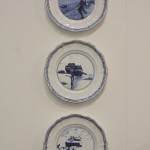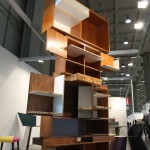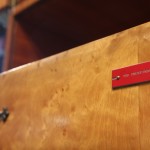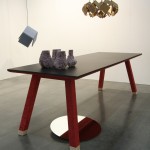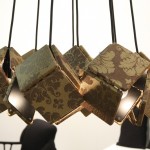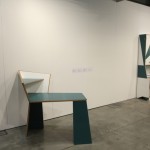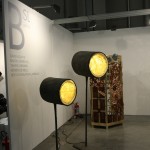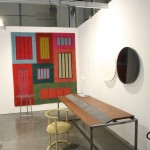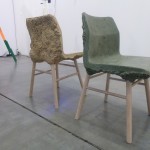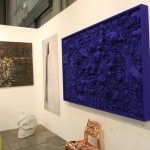Object. Limited Edition Design at MIART Milan 2013
Before Milan Design Week and Furniture Fair really get started we took the opportunity to relax a little and to visit Milan’s contemporary art fair, MIART, and for all their new “Object” section devoted to contemporary design.
Curated by Michela Pelizzari and Federica Sala “Object” presents 10 design galleries from Italy, France, Israel and the Lebanon.
Ten international galleries presenting an equally cosmopolitan pallet of objects, ranging from limited edition pieces from the 1950s over the results of student research projects and on to those special commissions that really allow design galleries to shine and stress their own character.
We know it’s unfair and subjective, but…. for us the highlights were the limited edition table by Oscar Tuazon for Milan based Plusdesign, the storage/display unit Libreria Volumi Sospesi by Matteo Casalegno at Galleria Paola Colombari and a truly delightful 1959 coffee table by Jorge Zalszupin at Galleria Rossella Colombari that technically belongs in our “Lost Furniture Design Classics” series.
In addition to the individual works we were also very taken by the complete displays from two of the galleries.
Carwan Gallery Beirut were, in the words of director Nicolas Bellavance-Lecompte, the “exotics” of the group presenting a collection of pieces largely outwith any easily recognisable European syntax. Among the, for us, best pieces were the objects in the Tessera family by Lebanese architect Marc Baroud – a series of almost transient objects combining walnut blocks and leather – the “Slingshot” collection by Karim Chaya which presents one of the most potent symbols of Palestine resistance as a luxury item in, for example, brass, gold or glass, while the complete Carwan stand was surrounded by hand-painted Coca-Cola signs that could be once found throughout Beirut, but which have now vanished like the artisan culture that helped create them.
Limited edition design of a completely different kind could be found at Benevento based Swing Gallery. Founded in 2011 Swing Gallery has a small but compelling roster of designers including Julian F. Bond who was represented in Milan with objects from his Hexagonal Pixel Vases collection and Harry Thaler with his Silk Lamps and, the literally just completed, Silk Table – objects that combine the banal with the truly sublime, namely San Leucio silk, to create everyday objects that are anything but. But also very much are.
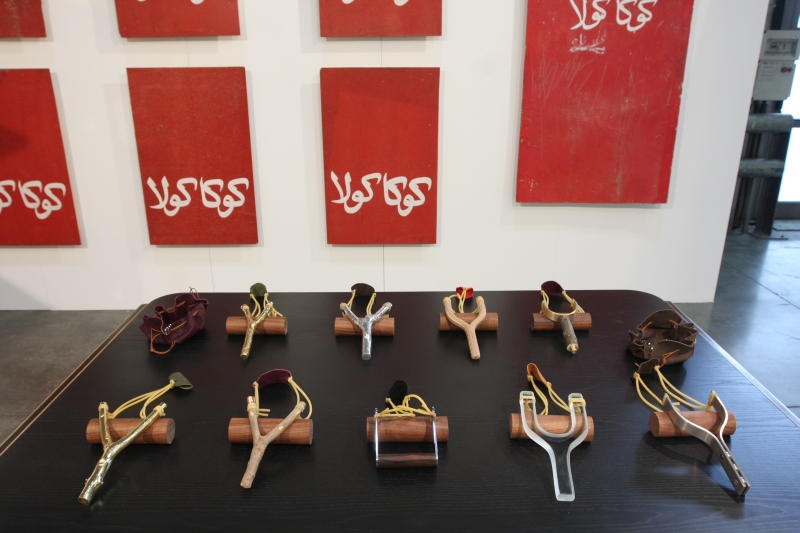
The Slingshot collection Karim Chaya at Carwan Beirut (In the background hand-painted Coca Cola signs)
We find the inclusion of design galleries at MIART a good and positive development.
Despite the unmistakable whiff of privilege that invariably surrounds contemporary design galleries, they do serve an important function. On the one hand we know numerous young designers who can pay the rent thanks to income from galleries, income that over more traditional product distribution routes simply couldn’t be realised. And we also we know numerous commercially available products that began life as experimental, concept pieces before subsequently being taken on by a manufacturer. The commercial object may have lost all the idealism and adventure of the original piece, is however always a functional and aesthetic object that helps move genres forward.
Contemporary design galleries are always present during Milan design week. Always showing somewhere in the city.
However design galleries aren’t charitable trusts dedicated to advancing design; they are commercial organisations and as such need to sell pieces.
And that is always going to be easier in a location where people looking to buy creative works congregate rather than amongst “normal” design festival visitors.
Consequently a contemporary design section at MIART makes sense.
And that the visitors to MIART have a potential interest in design as well as art could be gauged by the occasional pieces of furniture to be found on the “normal” stands. A particular mention in this context must go Marjan van Aubel & Jamie Shaw for their Well Proven Chair at A Palazzo Gallery; an object based around an intriguing chair shell made from bio-resin and wood shavings.
Interest of course can be potential or active and the question is if the MIART public accept Object as an opportunity or simply use it as a curious diversion from the serious business of buying art.
All the galleries we spoke to were relatively happy with how things had progressed.
Although to be fair, that is what we expected them to say.
The proof of the pudding in such cases is always if the exercise is repeated and if so how many galleries sign up for a second time. And also how many further galleries contact the organisers looking to book a stand for 2014.
We’ll keep you updated.
Until then a few impressions from Object at MIART Milan 2013.
- Carwan Beirut at MIART Milan 2013
- The Slingshot collection by Karim Chaya at Carwan Beirut
- 1959 Coffee Table by Jorge Zalszupin at Galleria Rossella Colombari
- Libreria Volumi Sospesi by Matteo Casalegno at Galleria Paola Colombari
- Stones and Tanks Ware by Francesco Simeti at Plusdesign
- Totem by Martino Gumper at Nilufar….
- … including a drawer just for us!
- Swing Gallery at MIART Milan 2013
- Silk Lamps by Harry Thaler at Swing Gallery
- Two objects from Gio Ponti Translated by Martino Gamper at Nilufar
- Luciferase by Nacho Carbonell at Galerie BSL
- Plusdesign with the table by Oscar Tuazon
- Well Proven Chair by Marjan van Aubel Jamie Shaw at A Palazzo Gallery
- Chippensteel Copper by Oskar Zieta at MIART Milan 2013
- Hexagonal Pixel Vases by Julian F Bond at Swing Gallery
Tagged with: Harry Thaler, MIART, Milan Design Week
